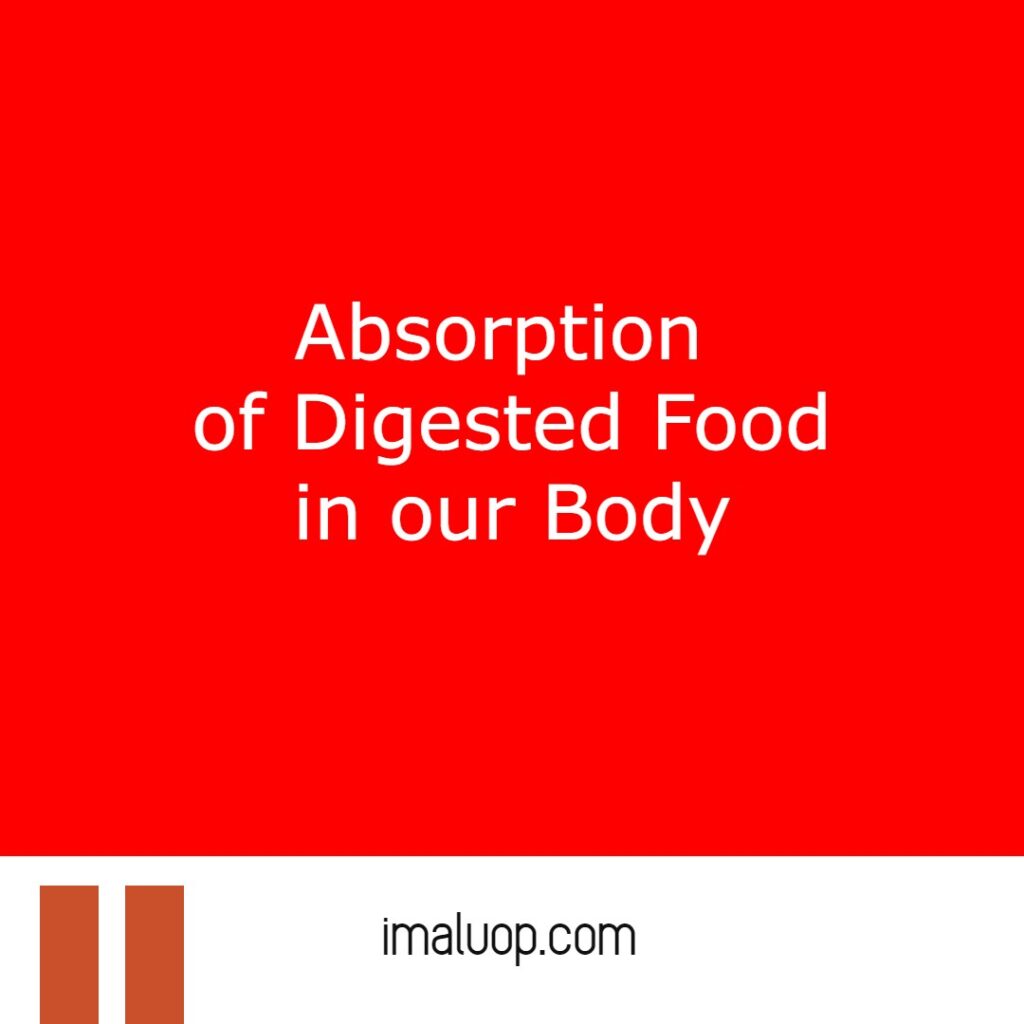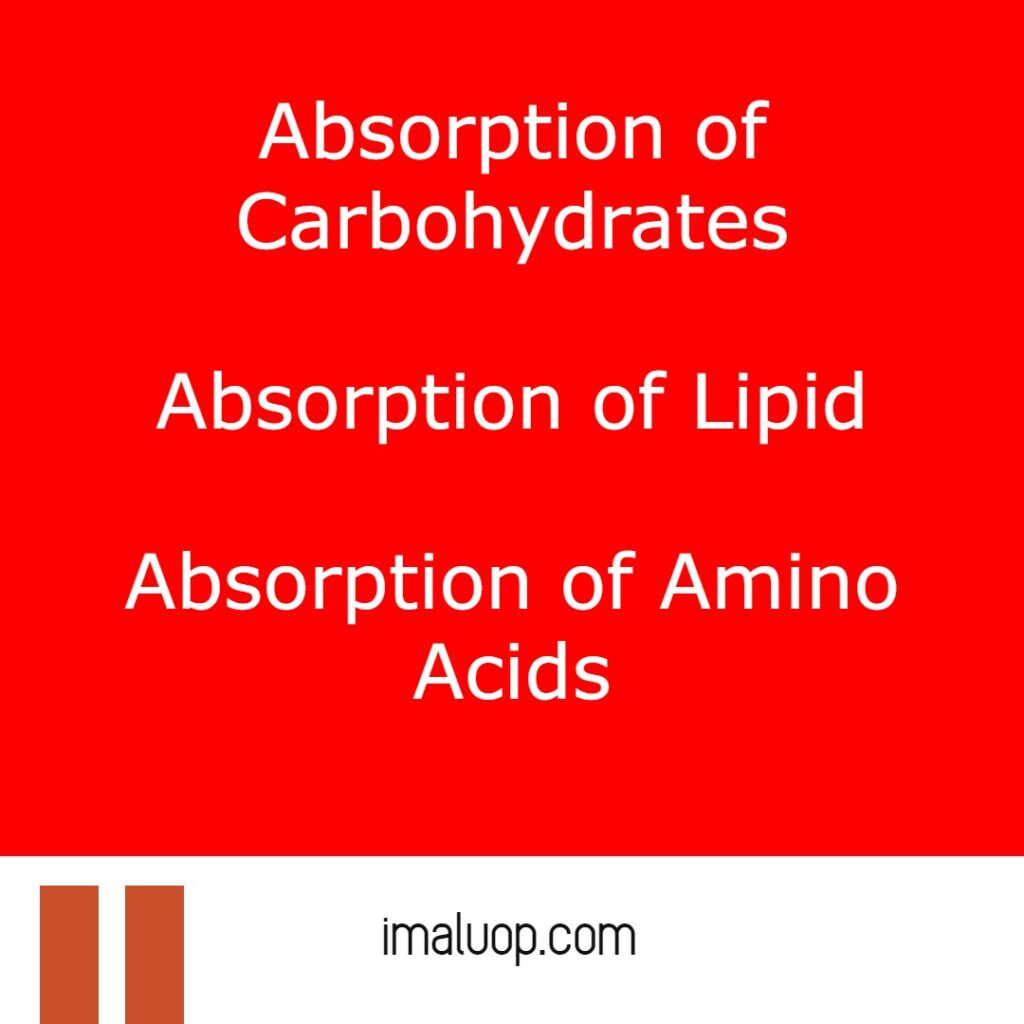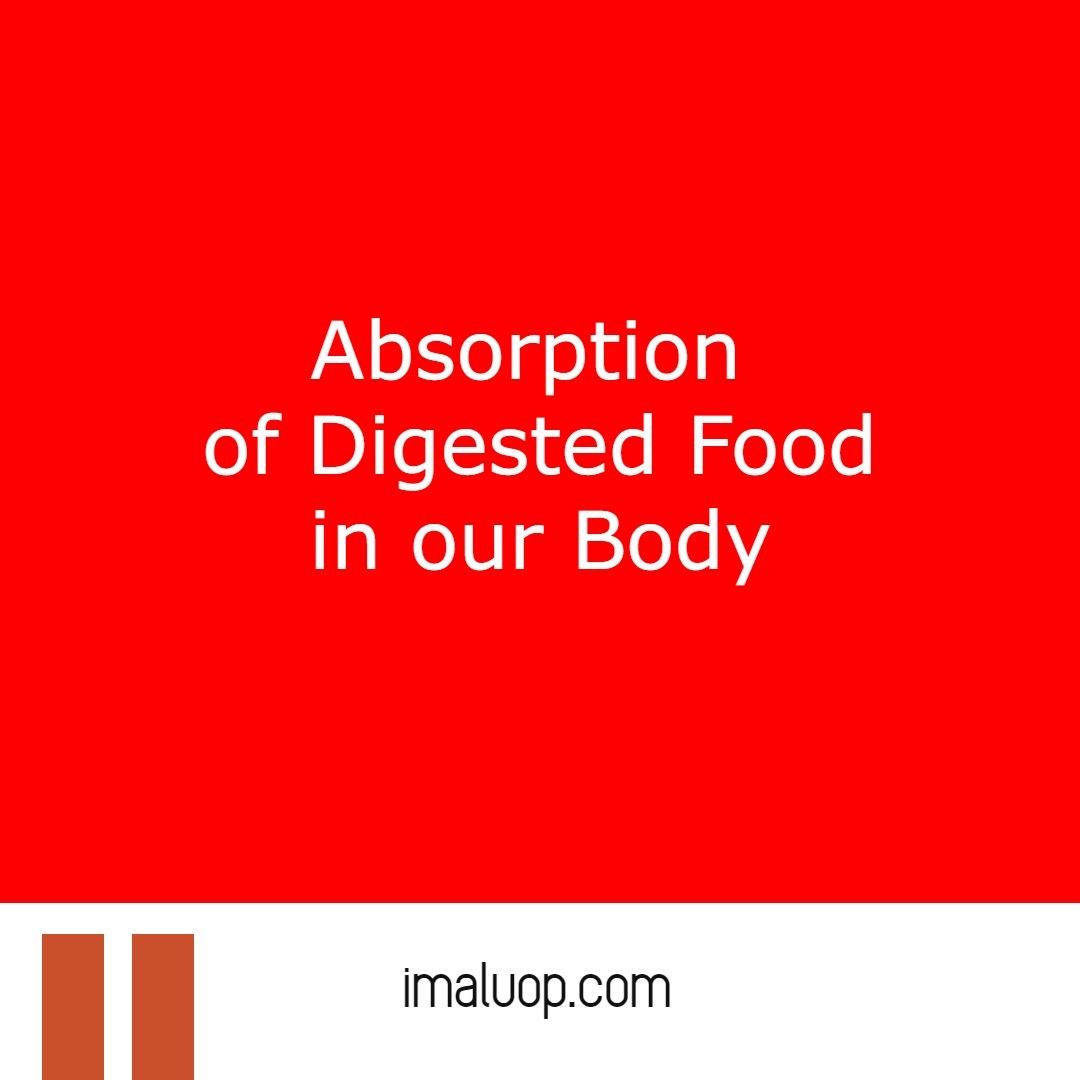Hi, now we will understand how absorption of digested food occurs inside our alimentary canal. You know that we take food for maintaining our daily life activity but in food all the chemicals are not present in simple form. During digestion our body can convert these food molecules into simple molecules so that our cells can use it to release energy.
After digestion the simple molecule produced should be transferred to blood flow because it needs to be circulated throughout the body. If it did not circulate the whole body then all tissue would not get the nutrients equally. But food has different types of molecules and all molecules are not absorbed in the same way because their chemical nature is different.
Table of Contents
Absorption of Digested Food in our Body ?
I think you know that major biomolecules in food are protein, carbohydrates and fats. After digestion protein breaks down into amino acids, carbohydrates break down into monosaccharides like glucose and lipid break down into fatty acids. Now we will try to understand how these molecules are absorbed in our alimentary canal.

Absorption of Carbohydrates:
In our digestive system carbohydrates of the food break down into different types of monosaccharides – glucose, fructose, galactose. In our small intestine monosaccharides absorption occurs at a very high rate. Absorption of monosaccharides in our alimentary canal occurs mainly in two ways – simple diffusion, facilitated diffusion and active transport. First two methods of absorption do not consume metabolic energy but the last method requires metabolic energy.
Now glucose and galactose absorption occurs in all the three ways – simple diffusion, facilitated diffusion and active transport. But in case of fructose absorption occurs in the process facilitated diffusion only. Epithelial cells present in the lining of the small intestine absorb glucose with the help of sodium ion co transport.
One glucose molecule or one galactose molecule transports two sodium ions together with the help of a carrier protein and it is an energy consuming process. Then these glucose and galactose molecules absorbed by the epithelial cells transfer to the vein of the villi with help of facilitating diffusion. Absorption of fructose occurs with the help of facilitated diffusion without any consumption of energy.
Absorption of Lipid:
All the fatty or oily food we take breaks down into simple molecule fatty acids. Fatty acids are water insoluble because their hydrophobic part. For this reason it is difficult to mix with blood but some amount of fatty acids mix in the blood in the intestinal blood capillaries. Bile salts act on the fatty acids and make them micelles which enter into epithelial cells of intestinal mucosa layer.
Then the micelles process further and all the fatty acids wrapped by protein coat which makes the fatty acids into lipoprotein globules. These lipoprotein globules are known as chylomicrons which much larger in size and unable to enter blood capillaries. Chylomicrons enter into the lacteal present in villi then the lipid goes into lymph flow in the form of chylomicrons.
Finally lipid goes into blood stream from lymph flow. Fat soluble vitamins like vitamin A, vitamin D, vitamin E and vitamin K also follow same mechanism to transfer into blood flow from lumen of small intestine.
Absorption of Amino Acids:
The protein part of food is digested and broken down into simple molecule Amino Acids and these Amino Acids are absorbed in our digestive canal. Like glucose, most of the amino acids are absorbed via sodium dependent co transport which is an energy consuming process.
Very small amount of amino acids are absorbed from the lumen of the intestine via passive transport without any consumption of metabolic energy and goes directly to the villi capillaries blood. Active sodium dependent co transport occurs in case of L amino acids absorption and passive transport occurs in case of D amino acids transport. Amino acids are absorbed at a very fast rate in the duodenum and jejunum region of the intestine.

Absorption of Water and Electrolyte:
Absorption of water occurs with help of simple diffusion and absorption of most electrolytes with the help of active transport, like in case of sodium. In case of calcium ion, iron, phosphate, magnesium, potassium are absorbed by active transport through the epithelial cells.
Read More:
Reference: Absorption of Digested Food in our Body
Hi Everyone!!! Welcome to Imaluop. Imaluop always try to learn some new and he want to share to other people. Here we will try to learn various topics on Science, specially on Biological Sciences.
